
Discover the fascinating story behind the Beatles’ iconic recordings in this comprehensive guide. Mark Lewisohn’s detailed account explores the studio techniques, sessions, and legacy of one of music’s greatest bands.
Overview of the Book’s Significance
Mark Lewisohn’s “Recording the Beatles” is a definitive guide to the band’s studio work, offering unparalleled insights into their creative process. The book meticulously documents every recording session at Abbey Road, detailing the evolution of their music and the innovative techniques used. It serves as both a historical archive and a technical manual, making it indispensable for audio engineers, historians, and Beatles enthusiasts alike. Its significance lies in preserving the legacy of one of music’s most influential groups, providing a comprehensive understanding of their artistic and technical achievements.
Key Themes and Topics Covered
The book delves into the Beatles’ studio evolution, tracing their journey from early recordings to their final albums. It explores the development of Abbey Road Studios, the role of George Martin, and the technical innovations that shaped their sound. Detailed analyses of iconic albums like Sgt. Pepper’s and Abbey Road reveal the band’s artistic growth. Additionally, the book covers the contributions of engineers and technicians, highlighting the collaborative effort behind their groundbreaking music. This comprehensive exploration offers insights into both the creative and technical aspects of the Beatles’ recordings.
Why the Book is Essential for Music Enthusiasts
For music enthusiasts, this book is a treasure trove of insights into the Beatles’ creative process. It bridges music history and technical detail, offering a unique perspective on their groundbreaking recordings. Fans and audio engineers alike will appreciate the in-depth exploration of studio techniques, iconic albums, and the team behind the scenes. Mark Lewisohn’s meticulous research provides unparalleled access to the Beatles’ legacy, making this book an indispensable resource for anyone passionate about music production and the Beatles’ enduring impact.
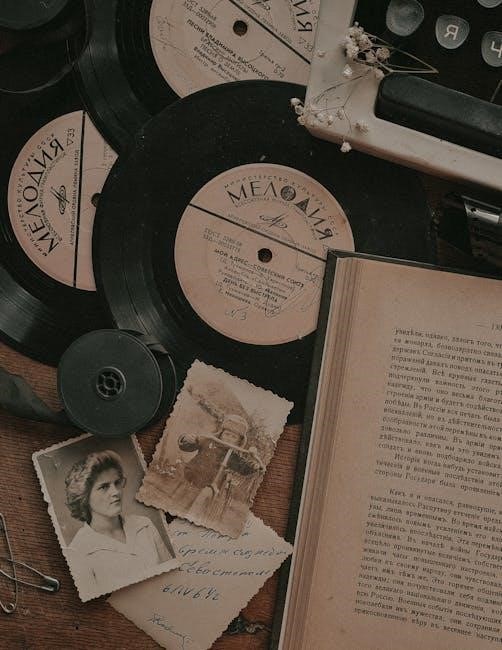
The Beatles’ Recording Sessions: A Historical Perspective
Explore the Beatles’ evolution through their recording sessions, from early days at Abbey Road to innovative techniques that shaped their timeless music and cultural impact.
Mark Lewisohn’s Contribution to Beatles’ History
Mark Lewisohn’s meticulous research and detailed documentation of the Beatles’ recording sessions have made him a cornerstone of Beatles historiography. His work, particularly in “The Beatles Recording Sessions,” provides an unparalleled insight into the band’s creative process. Lewisohn’s comprehensive analysis of every session, from the earliest takes to the final masters, offers a deep understanding of their artistic evolution. His dedication has made his books essential resources for fans, scholars, and audio engineers, cementing his role as a leading authority on the Beatles’ studio legacy.
The Evolution of Recording Techniques
The Beatles’ recordings trace the remarkable advancement of studio technology. From basic tape machines to multi-track systems, their sessions reflect the era’s rapid technical progress. Early recordings relied on simple microphones and live takes, while later projects embraced innovation like tape loops and stereo mixing. This evolution, documented in “Recording the Beatles,” highlights how the band and their engineers pushed creative boundaries, revolutionizing music production and leaving a lasting impact on the industry.
Abbey Road Studios: The Epicenter of Beatles’ Recordings
Abbey Road Studios stands as the iconic hub of the Beatles’ recording legacy. This historic studio, particularly Studio Two, witnessed the creation of their most seminal works. From 1962 to 1970, the Beatles relied on Abbey Road’s cutting-edge technology and acoustic excellence. The studio’s versatile spaces and innovative engineers played a pivotal role in shaping their sound. Its legacy endures, not only as a working studio but also as a pilgrimage site for fans, symbolizing the Beatles’ enduring impact on music history.

Studio Equipment and Techniques
The Beatles utilized iconic microphones, pre-amps, and evolving consoles to craft their sound. Tape machines enabled multi-track recording, revolutionizing their creative process and musical output significantly.
Microphones and Pre-Amps Used in Beatles’ Recordings
The Beatles’ recordings famously utilized the Neumann U47 and U87 microphones for vocals, capturing John and Paul’s harmonies with clarity. Tannoy Red and Gold monitors were staples in Abbey Road, ensuring accurate playback. Pre-amps played a crucial role in shaping the sound, with EMI’s custom designs enhancing the audio quality. These tools were pivotal in achieving the band’s distinctive tone, from the warmth of acoustic guitars to the punch of Ringo’s drums. Their innovative use of equipment laid the groundwork for modern recording techniques, leaving a lasting legacy in audio engineering.
Consoles and Mixing Desks: Then and Now

The Beatles’ recordings relied on EMI’s custom-built consoles, such as the TG12345, which offered unique sonic characteristics. Early desks had limited channels but were pivotal in shaping their sound. Modern consoles, like the Neve 8028, have evolved with advanced features, yet the vintage models remain sought after for their warmth. The transition from analog to digital has revolutionized mixing, but the principles of the Beatles’ era continue to inspire engineers, blending tradition with innovation in today’s recording practices.
Tape Machines and Multi-Track Recording
The Beatles’ recordings were groundbreaking due to the evolution of tape machines. Early sessions used two-track machines, limiting overdub capabilities. The shift to four-track in 1963 revolutionized their process, enabling greater creativity and complexity. Multi-track recording allowed the band to layer vocals and instruments, fostering innovation. The book details how these technological advancements shaped their iconic albums, showcasing the interplay between vintage equipment and timeless musical genius.
The Beatles’ Recording Journey Through the Years
From Hamburg’s raw energy to Abbey Road’s refined craft, the Beatles’ recording journey captures their evolution, innovation, and enduring impact on music history.
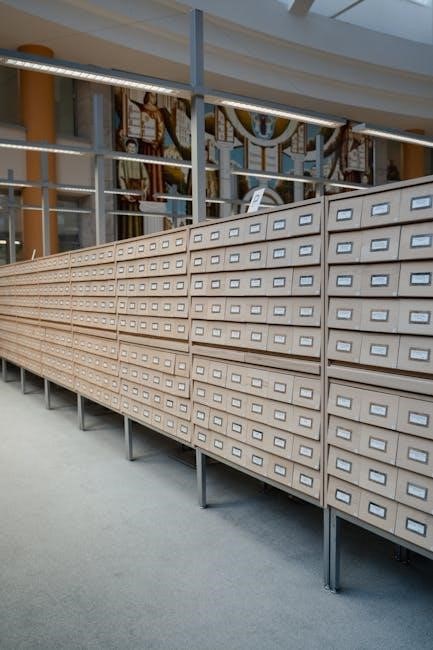
Early Years: From Hamburg to Abbey Road
The Beatles’ early years were marked by relentless performances in Hamburg, Germany, where they honed their craft and developed a raw, energetic sound. Returning to Liverpool, they transitioned to Abbey Road Studios, beginning their historic partnership with George Martin. These formative sessions laid the groundwork for their innovative recordings, blending rock ‘n’ roll with British charm. This period captured the band’s rapid evolution, setting the stage for their global impact and timeless music legacy.
Mid-Period: Innovation and Experimentation
The Beatles’ mid-period was defined by groundbreaking creativity and experimentation. Albums like Rubber Soul and Revolver showcased their exploration of new sounds, techniques, and genres. From the use of classical instruments to tape loops, the band pushed studio boundaries. This era saw collaborations with George Martin that revolutionized recording practices, resulting in timeless tracks that continue to inspire musicians and producers, solidifying their legacy as pioneers of modern music production and artistic innovation.
Later Years: The Final Albums and Legacy
The Beatles’ later years were marked by both artistic triumph and personal turmoil. Albums like Abbey Road and Let It Be showcased their mastery of studio craftsmanship, blending intricate arrangements with emotional depth. Despite their eventual breakup, these recordings cemented their legacy. The book reveals how these final works continue to influence modern music, offering insights into the band’s enduring impact and the timeless appeal of their creative process during this pivotal period.
Key Albums and Their Recording Processes
Explore the Beatles’ most iconic albums, detailing their innovative recording techniques and creative evolution, from Sgt. Pepper’s to Abbey Road and Let It Be.
Sgt. Pepper’s Lonely Hearts Club Band: A Revolutionary Album
Sgt. Pepper’s Lonely Hearts Club Band transformed music production with its conceptual unity and groundbreaking techniques. Mark Lewisohn’s “Recording the Beatles” reveals how the album’s innovative use of multi-track recording, orchestral overdubs, and psychedelic sound effects redefined studio practices. Released in 1967, it remains a landmark in audio engineering, showcasing the Beatles’ experimentation and George Martin’s visionary production. The album’s cultural impact and musical brilliance continue to inspire artists and engineers worldwide, solidifying its place in history.
Abbey Road: The Final Studio Album
Released in 1969, Abbey Road marked the Beatles’ final studio recording, capturing their collaborative brilliance one last time. The album’s iconic medley and polished production showcased George Martin’s mastery. Recorded at Abbey Road Studios, it utilized cutting-edge technology for its time. Despite tensions, the band delivered timeless tracks like “Come Together” and “Here Comes the Sun.” The album’s cover art, featuring the band crossing Abbey Road, has become a cultural symbol; Its legacy endures, embodying the Beatles’ innovative spirit and musical farewell;
Let It Be: The Turbulent Recording Sessions
Let It Be was marred by internal conflicts and creative disagreements. The sessions, initially aimed at returning to live performances, were fraught with tension. The album’s production, later reworked by Phil Spector, added orchestration that divided opinions. Despite the turmoil, tracks like the title song and “The Long and Winding Road” remain iconic. The album’s release in 1970 marked the end of the Beatles’ journey, capturing both the band’s unraveling and enduring musical brilliance in their final studio recordings together.
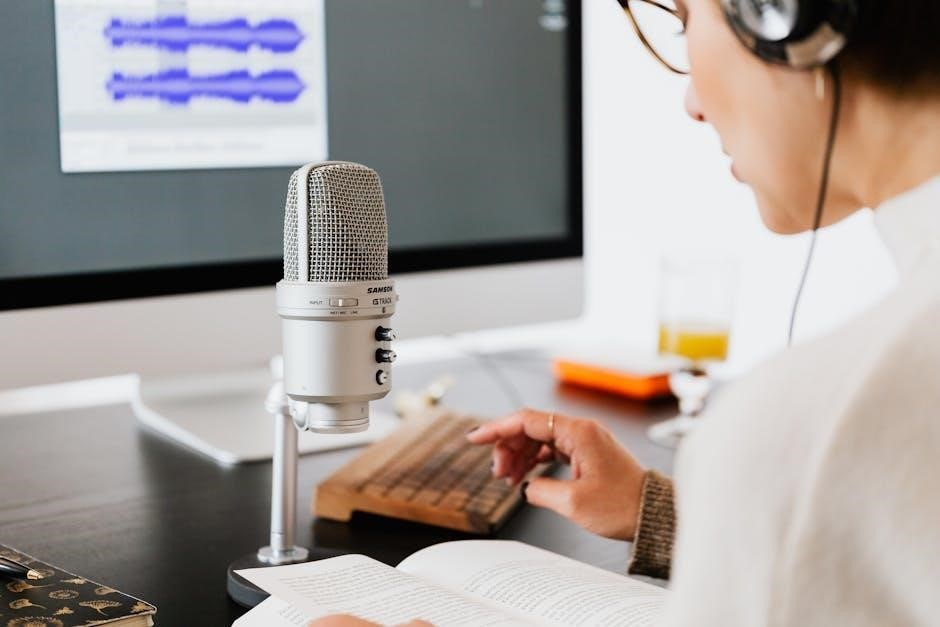
Behind the Scenes: The Team That Made It Happen
The book highlights the collaborative efforts of producers, engineers, and technicians who played pivotal roles in shaping the Beatles’ sound and studio legacy.
George Martin: The Fifth Beatle
George Martin, often hailed as the “Fifth Beatle,” played a pivotal role in shaping the band’s sound. As their producer, he brought innovative ideas to the studio, experimenting with tape loops, orchestral arrangements, and groundbreaking recording techniques. His collaboration with the Beatles resulted in iconic albums like Sgt. Pepper’s Lonely Hearts Club Band and Abbey Road. Martin’s expertise in classical music and audio engineering elevated the band’s creative vision, making him an indispensable part of their legacy.
Studio Engineers and Their Roles
Studio engineers like Geoff Emerick and Ken Townsend were crucial to the Beatles’ recording process. They operated the consoles, set up microphones, and ensured sessions ran smoothly. Their technical expertise allowed George Martin and the band to focus on creativity. These engineers pioneered innovative techniques, such as sound effects and tape manipulation, which defined the Beatles’ groundbreaking sound. Their behind-the-scenes work was essential to capturing the magic of the band’s iconic recordings.
The Unsung Heroes of Beatles’ Recordings
Beyond the spotlight, unsung heroes played vital roles in shaping the Beatles’ music. Tape operators, assistants, and technicians worked tirelessly behind the scenes, ensuring every session’s success. Their dedication and creativity, often overlooked, were integral to the band’s innovative recordings. The book highlights their contributions, revealing how their expertise helped craft some of the most iconic tracks in music history. These individuals were the backbone of the Beatles’ studio achievements, leaving an enduring legacy in audio engineering.
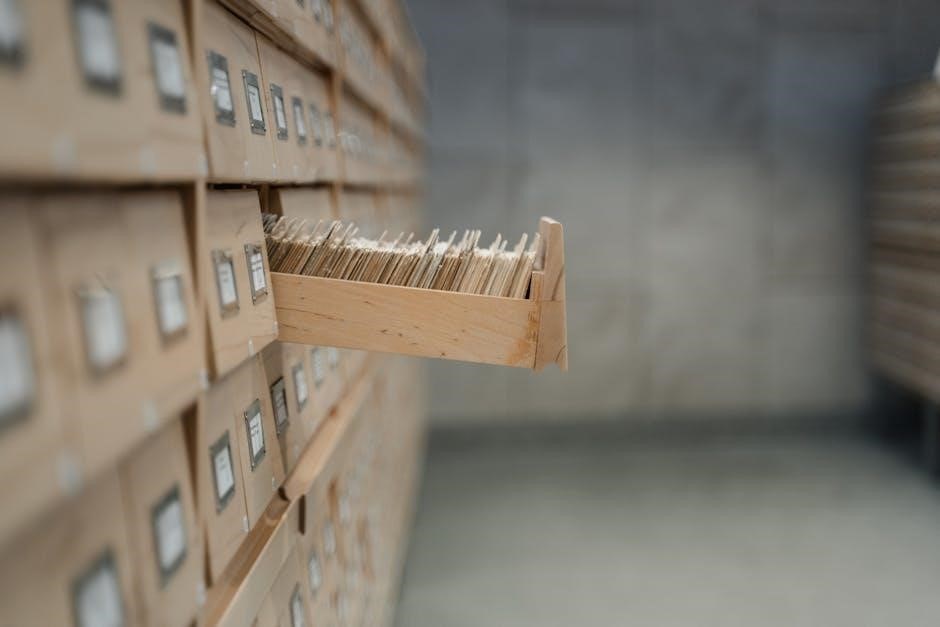
The Impact of “Recording the Beatles” on Audio Engineering
Mark Lewisohn’s work reveals groundbreaking techniques used by the Beatles, influencing modern audio engineering. The book is a cornerstone for education, inspiring new generations of sound professionals.
How the Book Influences Modern Recording Techniques
The book reveals the Beatles’ innovative studio techniques, inspiring modern engineers to experiment with analog methods in digital workflows. It highlights the importance of creative problem-solving and minimal equipment, encouraging a return to organic recording practices. By detailing historic sessions, it provides timeless lessons, making it a valuable resource for audio engineering education and practice, ensuring the Beatles’ legacy continues to shape contemporary music production.
Lessons Learned from the Beatles’ Studio Practices
The Beatles’ studio practices emphasized creativity, experimentation, and collaboration. Their use of tape loops, overdubbing, and unconventional instruments set precedents for modern recording. The book highlights how Producer George Martin and engineers pushed technical boundaries, offering insights into effective teamwork and innovation. These lessons inspire contemporary musicians and producers to embrace experimentation and maintain high artistic standards, ensuring the Beatles’ influence remains timeless in music production.
Its Role in Audio Engineering Education
Recording the Beatles serves as a vital educational resource for audio engineering students and professionals. The book provides unparalleled insights into historical recording techniques, offering a detailed analysis of the Beatles’ innovative studio practices. By examining the evolution of equipment and methods, it bridges the gap between past and present, inspiring modern engineers to adapt timeless principles. This comprehensive guide is widely regarded as a foundational text in audio education, preserving the legacy of groundbreaking recording practices for future generations.

Availability and Formats
Recording the Beatles is available in various formats, including PDF downloads for digital accessibility and physical copies for collectors. It can be found online through multiple retailers.
PDF Downloads and Digital Accessibility
The Recording the Beatles book is widely available in PDF format, offering convenient digital access. This allows readers to explore the Beatles’ studio practices and equipment in depth.
PDF downloads ensure portability and easy access across devices. Platforms like Amazon, Scribd, and specialized music forums provide links for downloading the book, catering to both collectors and students of audio engineering.
Physical Copies and Collectors’ Editions
Physical copies of Recording the Beatles are highly sought after by collectors and enthusiasts. The book, published by Harmony Books in 1988, is a detailed account of the Beatles’ recording sessions. Hardback editions, particularly first prints, are prized for their historical significance and meticulous documentation. Collectors’ editions often include rare photographs, session notes, and additional insights, making them invaluable to those passionate about the Beatles’ studio legacy.
Where to Find the Book Online

The Recording the Beatles book is widely available online in various formats. Digital copies, including PDF, can be found on platforms like Scribd or through online bookstores. Some websites offer free downloads, while others require purchase. Additionally, forums and communities dedicated to the Beatles often share links or provide guidance on accessing the book. For the latest updates, consider checking the official publisher’s website or signing up for notifications about new editions.
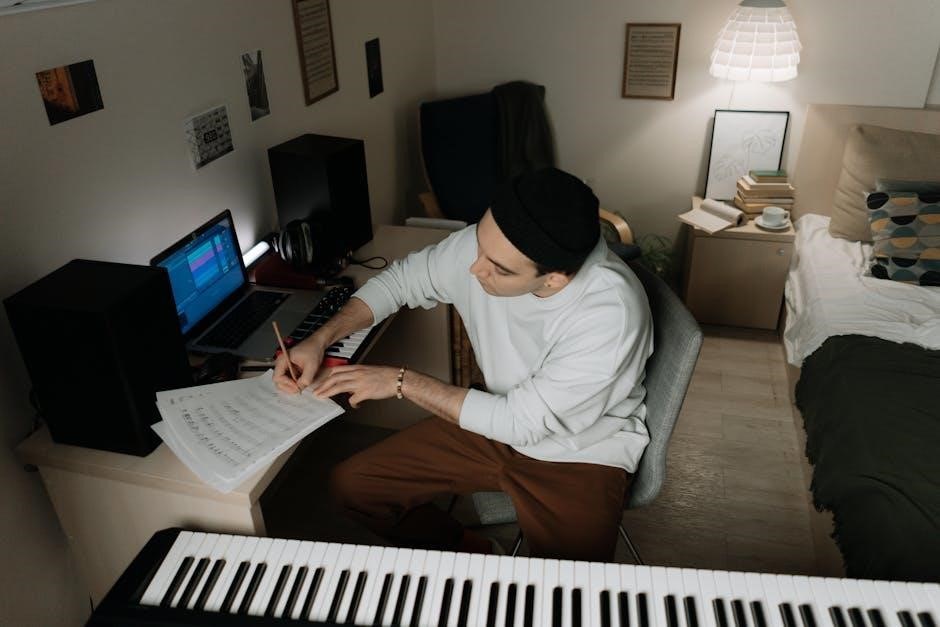
Recording the Beatles remains a cornerstone in music history, offering timeless insights into the band’s creative process. Its influence on audio engineering ensures its enduring relevance and educational value.
The Enduring Legacy of “Recording the Beatles”
Recording the Beatles has cemented its place as a vital resource for audio engineers and music historians. By detailing the band’s revolutionary studio techniques, it continues to inspire modern recording practices and educate future generations. The book’s meticulous research and comprehensive insights ensure its relevance, making it an indispensable tool for understanding the Beatles’ impact on music production. Its legacy endures as a testament to innovation and creativity in the recording arts.
Its Place in Music History and Education
Recording the Beatles holds a cornerstone position in music education, offering unparalleled insights into the band’s studio practices. It bridges the gap between historical recording techniques and modern audio engineering, making it a cornerstone for both students and professionals. Widely referenced in academic curriculums, the book provides a detailed understanding of the Beatles’ innovative approaches, ensuring its relevance in shaping future generations of musicians and producers.
Final Thoughts on the Book’s Importance
Recording the Beatles is a timeless resource for audio engineers, historians, and fans alike. Its meticulous documentation of the Beatles’ studio journey offers invaluable insights into their creative process and technical innovations. As a comprehensive guide, it not only preserves the band’s legacy but also inspires future generations to explore the art of recording. This book remains an essential read for anyone seeking to understand the intersection of music, technology, and history.